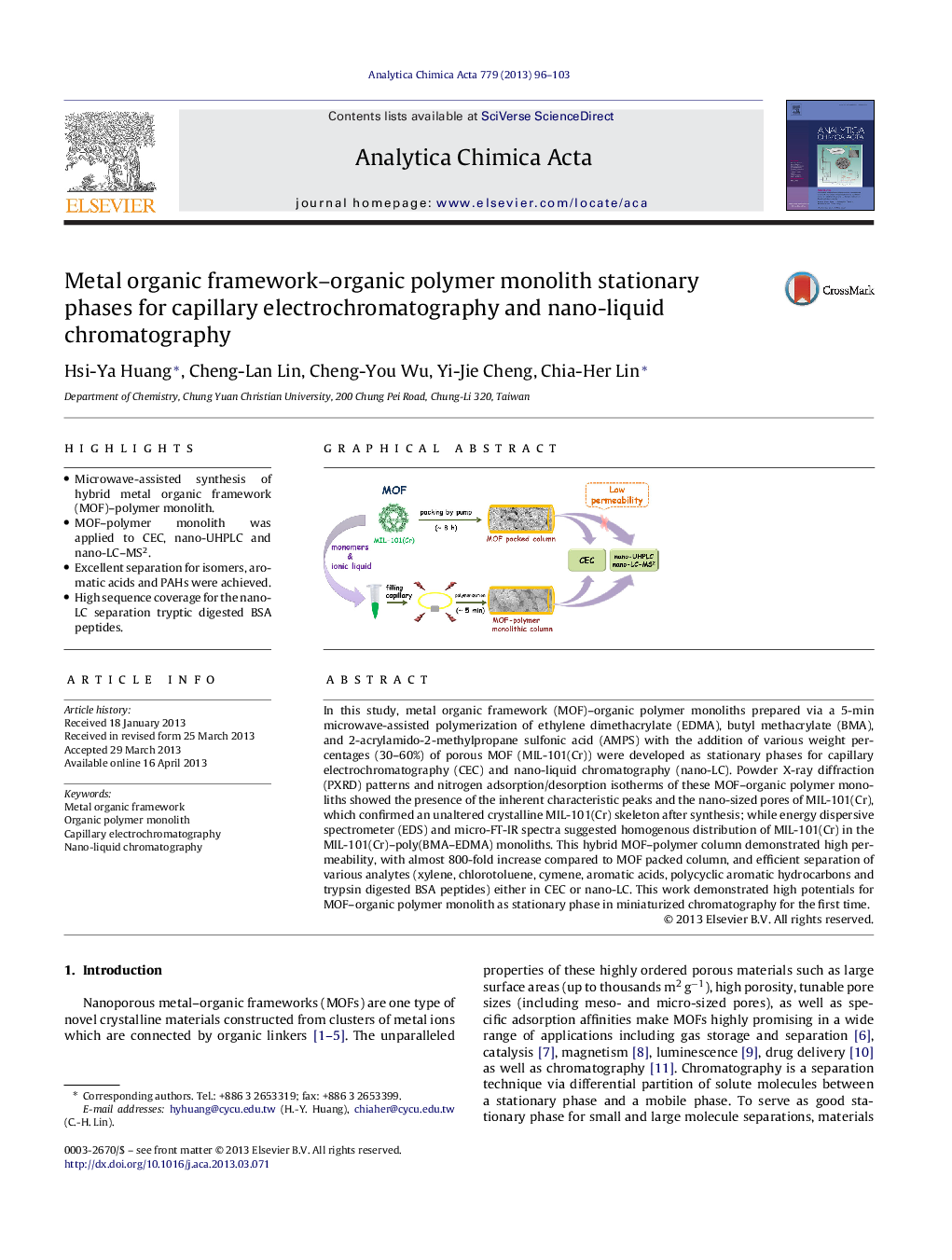| Article ID | Journal | Published Year | Pages | File Type |
|---|---|---|---|---|
| 1165359 | Analytica Chimica Acta | 2013 | 8 Pages |
•Microwave-assisted synthesis of hybrid metal organic framework (MOF)–polymer monolith.•MOF–polymer monolith was applied to CEC, nano-UHPLC and nano-LC–MS2.•Excellent separation for isomers, aromatic acids and PAHs were achieved.•High sequence coverage for the nano-LC separation tryptic digested BSA peptides.
In this study, metal organic framework (MOF)–organic polymer monoliths prepared via a 5-min microwave-assisted polymerization of ethylene dimethacrylate (EDMA), butyl methacrylate (BMA), and 2-acrylamido-2-methylpropane sulfonic acid (AMPS) with the addition of various weight percentages (30–60%) of porous MOF (MIL-101(Cr)) were developed as stationary phases for capillary electrochromatography (CEC) and nano-liquid chromatography (nano-LC). Powder X-ray diffraction (PXRD) patterns and nitrogen adsorption/desorption isotherms of these MOF–organic polymer monoliths showed the presence of the inherent characteristic peaks and the nano-sized pores of MIL-101(Cr), which confirmed an unaltered crystalline MIL-101(Cr) skeleton after synthesis; while energy dispersive spectrometer (EDS) and micro-FT-IR spectra suggested homogenous distribution of MIL-101(Cr) in the MIL-101(Cr)–poly(BMA–EDMA) monoliths. This hybrid MOF–polymer column demonstrated high permeability, with almost 800-fold increase compared to MOF packed column, and efficient separation of various analytes (xylene, chlorotoluene, cymene, aromatic acids, polycyclic aromatic hydrocarbons and trypsin digested BSA peptides) either in CEC or nano-LC. This work demonstrated high potentials for MOF–organic polymer monolith as stationary phase in miniaturized chromatography for the first time.
Graphical abstractFigure optionsDownload full-size imageDownload as PowerPoint slide
